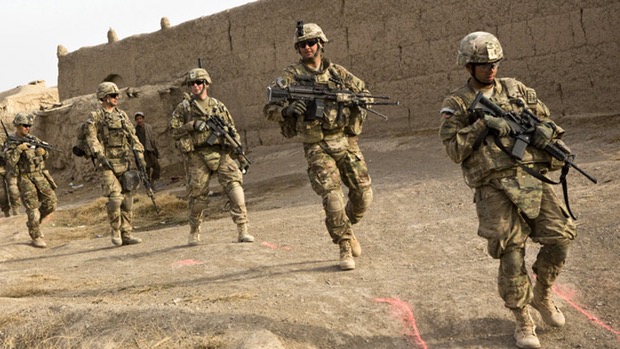NATO Troop Increase In Afghanistan Draws Sharp Criticism

NEW DELHI: The war in Afghanistan, which the previous United States administration vowed to end, is set to see yet another escalation as NATO allies converge in Brussels for a key summit. A major point on the agenda will be a potential increase in the number of foreign troops in Afghanistan -- a move that has been met with sharp criticism in Kabul.
NATO began formally considering increasing troops stationed in Afghanistan earlier this month. The proposal comes after military generals leading the operation in the war torn country requested a troop increase, explaining the move as necessary to combating the Taliban in the region.
NATO already has more than 13,000 troops in Afghanistan -- far in excess of targets put forth by the Obama administration, as former US President Barack Obama had vowed to end the war in Afghanistan and bring troops home. However, during Obama’s presidency, the move to rollback troops was repeatedly extended and modified, with the original plan to withdraw all troops from Afghanistan by 2014 never being met.
Earlier this year NATO generals began making requests for more troops, stating that an increase was necessary to fight the Taliban. The possibility of this request being entertained remained a big question mark for several months, as the newly sworn in Trump administration kept mum on the future of Afghanistan. President Donald Trump’s Afghanistan policy has been decidedly vague, with analysts pointing to the contradictory statements made by the real estate mogul turned politician on US policy in Afghanistan.
The discussion of a NATO troop increase, in fact, now comes as President Trump considers a plan send at least 3000 troops to Afghanistan. President Trump was expected to make a decision on Thursday’s meeting in Brussels, but that was delayed after reports emerged that some within the Trump administration have expressed concern regarding a troop increase.
“The thornier question is how Mr. Trump will reconcile the split between his war cabinet — led by Defense Secretary Jim Mattis and Lt. Gen. H.R. McMaster, the national security adviser, who both served in Afghanistan — and his political aides, among them his chief strategist, Stephen K. Bannon, who argue that a major deployment would be a slippery slope to nation building, something Mr. Trump has always shunned,” reports the New York Times, indicating a division amongst President Trump’s close advisers on the future of America’s role in Afghanistan.
The only certainty is that current US policy in Afghanistan is not working, and while a request of troop increase is indicative of that failure, any move to do so will only further involve the Trump administration in the country.
Meanwhile, the Taliban continues to expand its presence, with recent reports by the Special Inspector General for Afghan Reconstruction (SIGAR) office noting a huge decline in the territory controlled by the American-supported Afghan government with corresponding increase in influence of the Taliban and other militant groups, including the Islamic State. In a worrying assessment, the report notes that the Afghan government had 57.2 percent of the country under its control by the end of 2016 — a 6.3 percent decrease from 2015.
Reports from the ground paint an even more worrying picture, with the Taliban effectively in control of several Afghan districts, most notably Kunduz and Helmand. This, when civilian casualties continue to climb for another consecutive year. As a spate of attacks have occurred across Afghanistan, 2016 will go down as yet another bloody year, with United Nations Assistance Mission in Afghanistan (UNAMA) figures documenting 11,418 civilian casualties (3,498 deaths and 7,920 injured) between 1 January and 31 December. These figures amount to a three per cent increase in total civilian casualties compared to 2015. Since 2009, the armed conflict in Afghanistan has claimed the lives of 24,841 civilians and injured 45,347 others. It is worth noting that as UNAMA figures paint a very worrying picture, the actual casualty figures are probably significantly higher.



